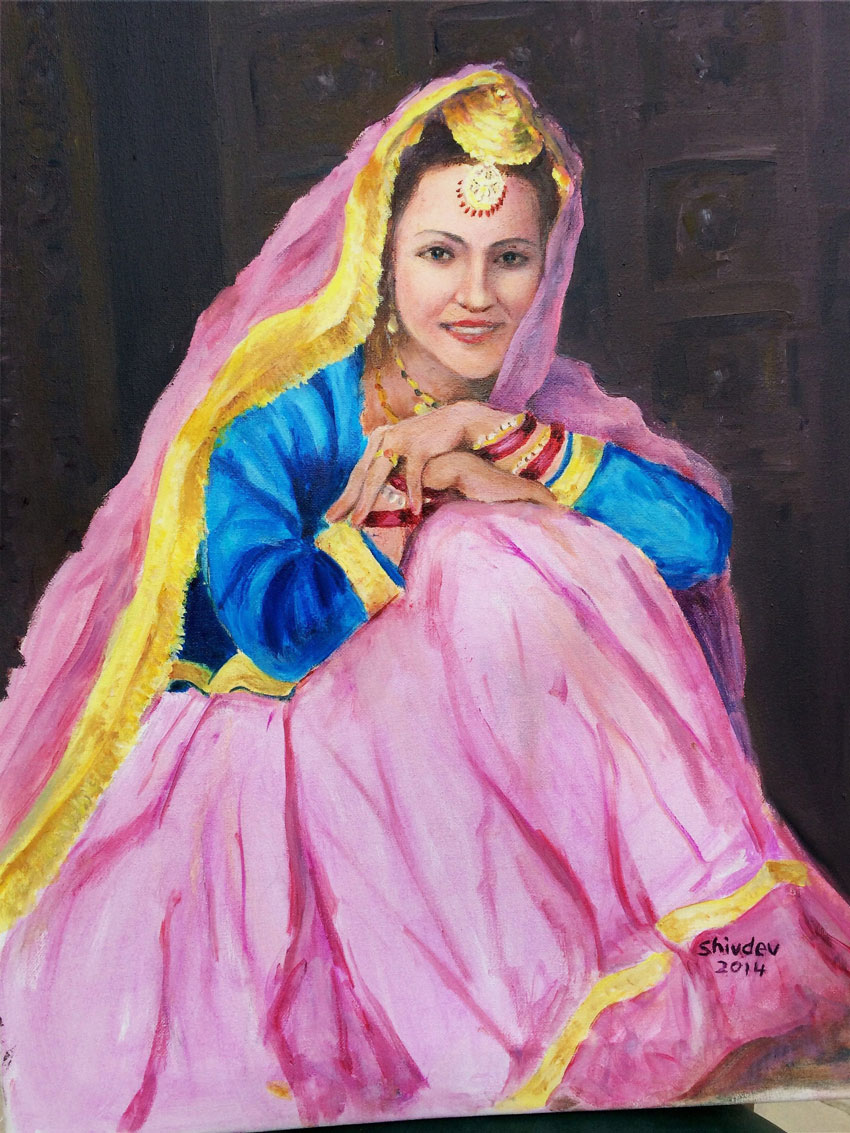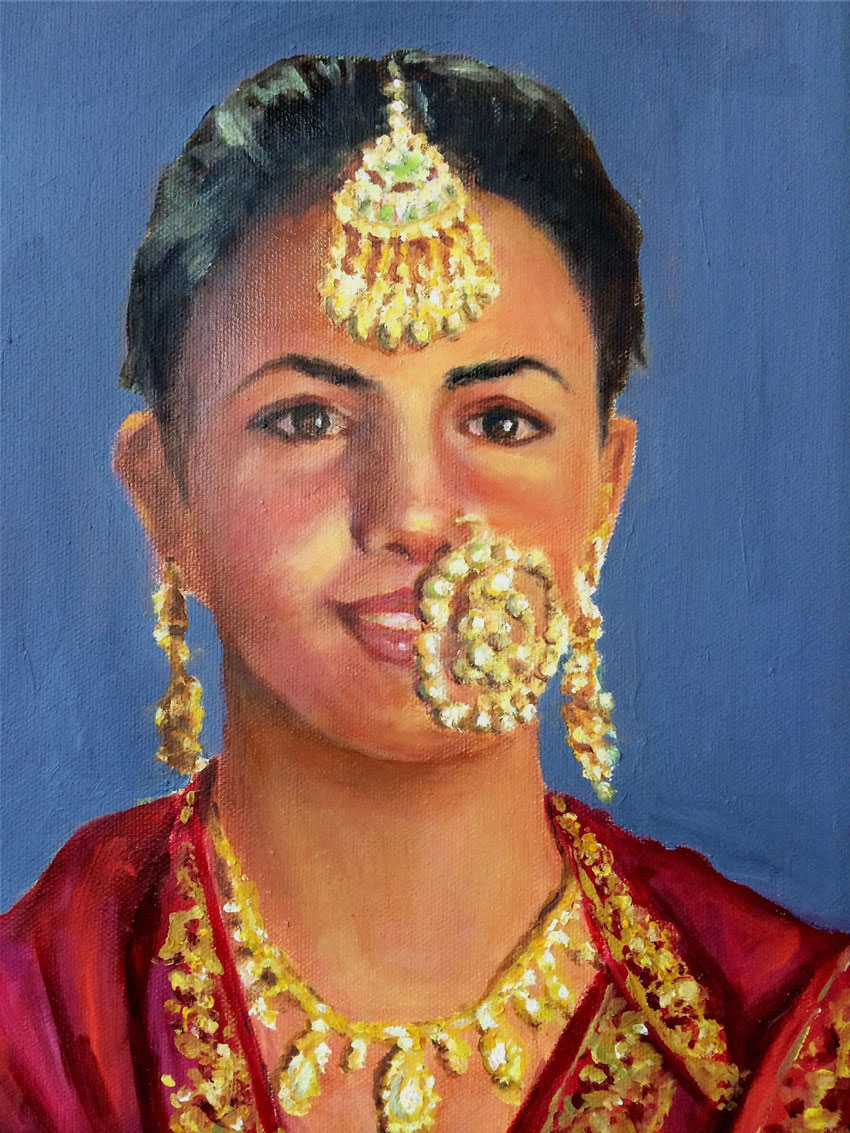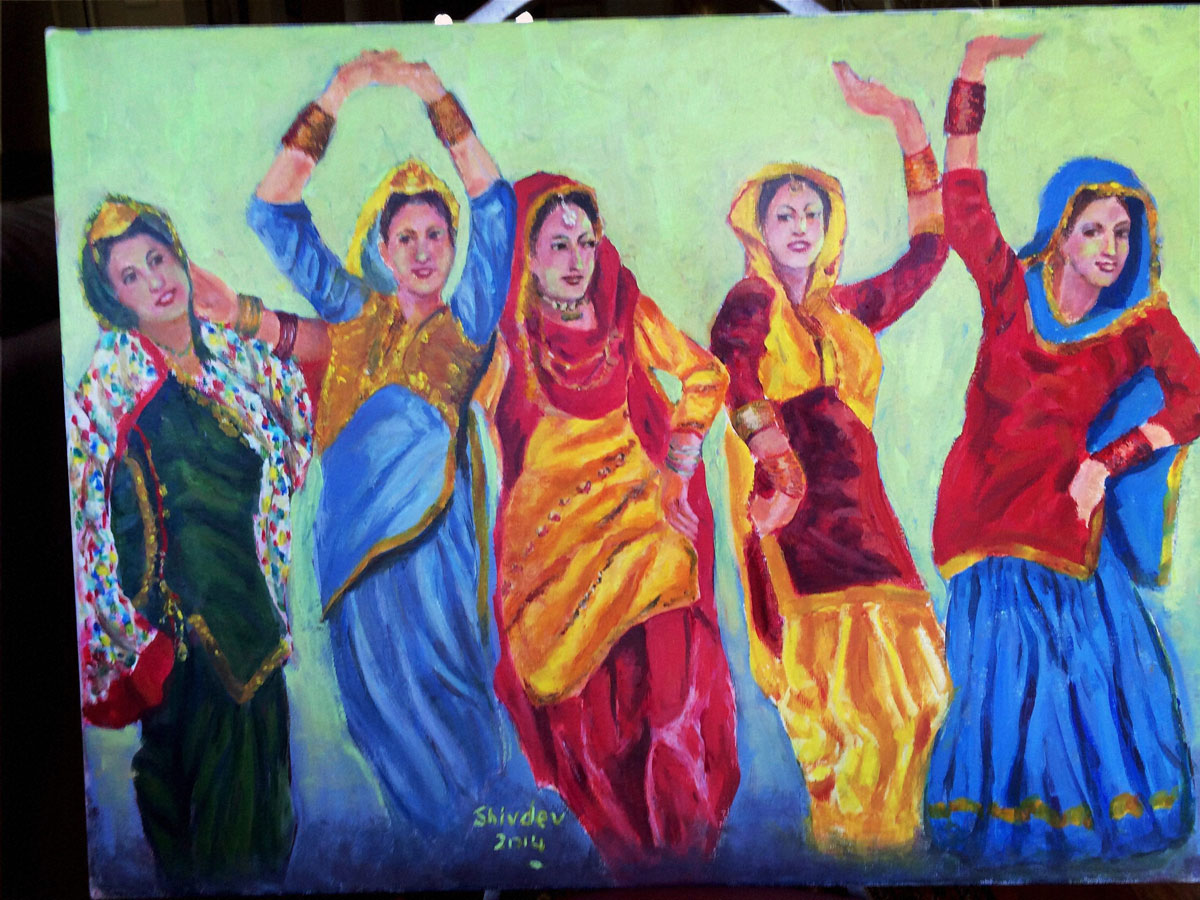BEYOND THE VILLAGE POND
Oil painting by U.S.-based surgeon Shivdev Singh, depicting folk dance of Punjab, at an exhibition at the Visual Art Gallery in New Delhi. (Press Trust of India)
For U.S.-based surgeon-turned-painter Shivdev Singh, memories of a Punjab he left behind over 40 years ago find expression in art — a mix of oils, charcoal sketches and watercolors — evocative of vibrant folk traditions of the north Indian state.
A bride bedecked in finery and her grandmother’s ornate gold jewelry, a group of buffaloes being bathed in a river, a Punjabi lass twirling her Phulkari dress against a backdrop of lush yellow green mustard fields besides other snapshots from daily folk life of rural Punjab are among 20 oil works U.S. surgeon Shivdev Singh has brought with him for a solo exhibition in New Delhi.
Curated by eminent art historian Alka Pande, the show is scheduled to begin at the Visual Arts Gallery from Sept. 17. A book by the same title, of images of paintings along with descriptive text, is also lined up for a launch on the occasion.

“My father was a surgeon in the Indian army and I wanted to be like him, but I had always doodled and sketched right from my childhood,” says 79-year-old Singh, who studied medicine at Government Medical College, Patiala.
“In fact, even as a medical student, I continued to sketch.” Many of the sketches of long bones in the Anatomy Museum at Medical College, Patiala have been done by Singh.
Singh continued to paint all through his medical career but concedes that being a full time pediatric surgeon and an artist wasn’t easy.
“After a long thought, I retired from surgery to pursue art full time and spent four years in the College Arts department at Lancaster, California. I subsequently trained at Art Institute of California and painted live models,” he says.
Starting off with watercolors, Singh held his first exhibition in California in 1997 with a series of 100 works of U.S. landscapes. Subsequently he has exhibited twice in India, once in Chandigarh in 2000 followed by Delhi in 2009.
The title of his show “Beyond The Village Pond: Cultural Reflections of Punjab” reveals Singh’s nostalgia for the past.
“The village scenes, ponds, museums, pre-wedding rituals, images of a bride dressed up, all to me represent a Punjab gone by. Life was simple back then and village was a self-sufficient unit with everything available to fulfill every need. The food that we ate was fulfilling and balanced with nutrition and locally available produce,” says Singh.

Traditional events like Giddha, Jaago (a symbolic pre-wedding dance), wrestling matches and village fair are brought to life in Singh’s colouful and skillful depiction of the Punjabi way of life.
The artist says he was prompted to embark on the new series of paintings and books by his grandson’s curiosity to know about his Punjabi roots.
“My grandson wanted to know what I did as a kid, what I ate and how I spent my time. Many children like him from the diaspora are clueless about their roots and that is when I decided to write the book,” says Singh.
Published by Speaking Tiger, the book which initially was about 200 pages or so was condensed to about 100 pages, says the author.
Singh says in his experience the younger generation does not have the patience to read voluminous text-heavy books.
“As a young child, I visited my ancestral villages of Gumti and Sewavala (District Bhatinda) and was told that five generations of our family had lived there.
“The people in the village were very close and appeared as if all were related. I have worked as a surgeon in India, America, England, France and Spain and experienced this diverse culture. With this rich experience, I developed a deeper understanding and appreciation of the culture I had inherited,” says Singh.
The painter says his is a devotional presentation to the generations of ancestors who settled in the area called Punjab. “This show is a tribute to Punjabi folk culture which I admire and am proud of,” says Singh.
Curator Pande says Singh in his book has “compiled a collection of some unusual folk songs, which find a doppelganger image in the lyrical renditions in the paintings he has been creating over the last many years.”


